How many bees does it take to seal an Act of Parliament?
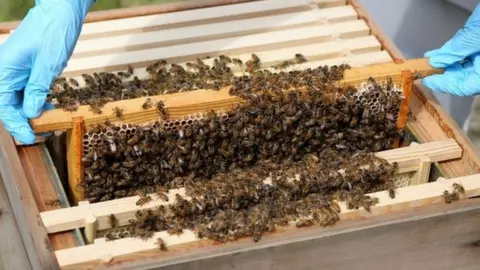 PA
PAHow many honey bees does it take to seal an Act of Parliament?
In the case of the Scottish Parliament, the answer is one million.
On the roof of the parliament building in Edinburgh, a million bees spread across 15 hives not only create honey every year but also the wax used to fill the Great Seal of Scotland which seals each Act of the Scottish Parliament.
The big responsibility of caring for the hives lies with official beekeeper of the Scottish Parliament, Stuart Hood.
He has spoken about his first encounter with a bee and how beekeeping became a family business.
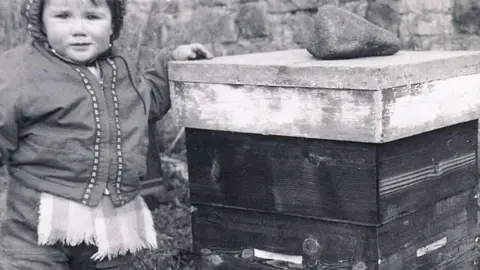 Hoods Honey
Hoods Honey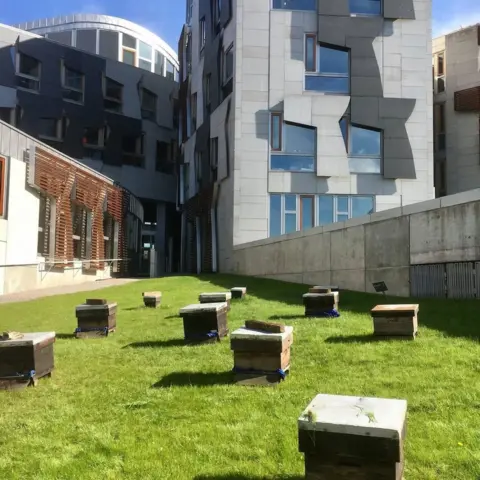 Hoods Honey
Hoods Honey"My very first memory was my father kissing me goodnight and a bee that was in his clothes stung me - I could only have been two years old," he said.
"If I had a pound for every time I've been stung, I'd be sitting on a beach somewhere with my feet up drinking cocktails but I wouldn't be - I'd still be looking after my bees to be honest with you."
With the help of his daughter Eilidh - a fourth generation beekeeper - Mr Hood visits the parliament weekly in the summer months to check on the bees.
He said: "We make sure the queens are laying and that they're all healthy and well and they have enough space.
"As we go further into the season we make sure there is absolutely loads of honey left for them and that they never ever go hungry during the winter months.
"Everybody in the parliament is very, very supportive of having the bees there.
"There are a lot of people on the site but to my knowledge there's been no issues with people being stung."
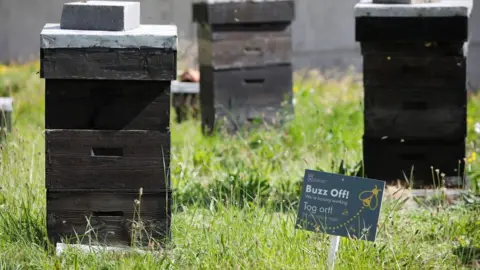 Andrew Cowan/Scottish Parliament
Andrew Cowan/Scottish ParliamentAny extra honey is bottled up and sold at the parliament shop where it is in high demand.
Mr Hood said: "I think it's the most popular item they have at the Scottish Parliament shop - there's a bit of a stampede to get down there when they announce that the honey is for sale.
"We would never take honey off our hives to sell if it would neglect them, they are our priority.
"My dad used to say look after the bees and the bees will look after you."
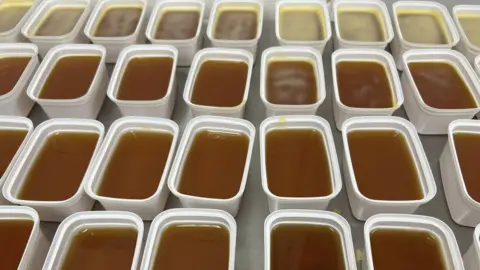 Hoods Honey
Hoods Honey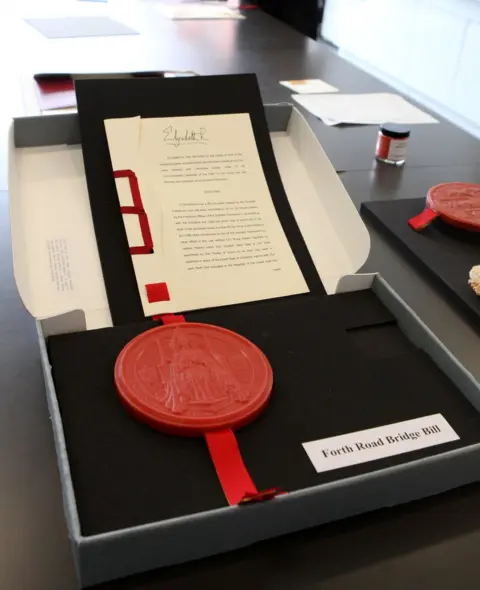 Scottish Parliament
Scottish ParliamentAfter harvesting the honey, the Hood family collect and purify the wax that is left over on each frame.
It is then delivered in small blocks to the National Records of Scotland for a very special purpose.
"They then melt it themselves and put the red dye through it to make the Great Seal of Scotland," Mr Hood said.
 Hoods Honey
Hoods HoneyThe Hood family have been beekeepers since the 1950s with their particular type of bees descending from a strain by noted beekeeper Willie Smith.
A veteran of World War One, Mr Smith mentored Stuart's father, George Hood. The Hood family continue caring for bees using methods Mr Smith developed.
A piece of their mentor's legacy even lives on in the hives kept at the Scottish Parliament.
"In every apiary we have there will always be one white box - just one white. Those are ones Willie Smith made himself after the First World War," Mr Hood said.
"He took up beekeeping to get over what he saw at the Battle of the Somme."
'A bee's-eye view'
The Scottish Parliament is the first legislature in the United Kingdom to keep bees with hives in the Members Garden.
This vantage point allows the bees access to the gardens around the parliament building as well as nearby Arthur's Seat and Holyrood Park.
The landscape is a well-loved location for Edinburgh artist Jenni Douglas who created custom artwork to be sold on items such as bags, notebooks, coasters and tea towels in the parliamentary shop.
Ms Douglas took inspiration from the parliament building itself when creating the ParliBees designs.
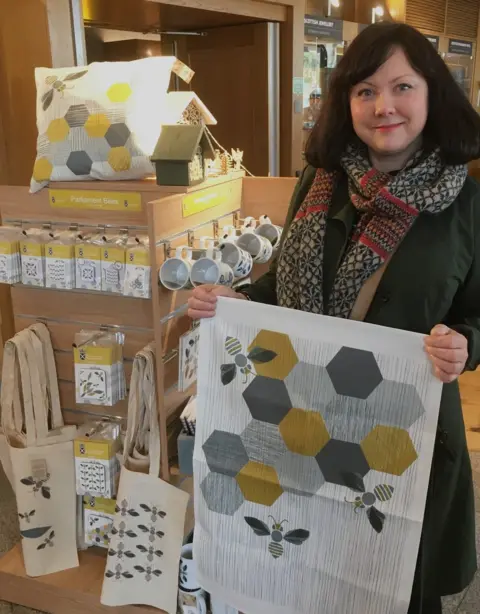 Jenni Douglas
Jenni DouglasShe said: "The lines that I used are based on the oak beams and the struts that are on the doors and the windows, so everything really has a root in a part of the building - inside and outside.
"There is a leaf pattern in the notebook that is actually the shape of the upturned boats as viewed from the roof, sort of like a 'bee's-eye' view, rather than a bird's-eye view because they're up on the roof."
Ms Douglas grew up in Holyrood, even having primary school sports days on the site where the parliament building now stands.
She added: "I spent a lot of time sketching, reading, planning and creating projects there and in summers gone by I've used it as a bit of an outdoor office.
"So it was an amazing feeling to know I've designed something that is based there and has a customer base all over the world.
"It feels really special."
